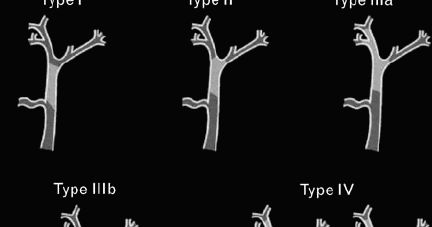How Fast Does Bile Duct Cancer Spread
Bile duct cancer, also known as cholangiocarcinoma, is a rare but aggressive form of cancer that originates in the bile ducts. These ducts are vital as they carry bile from the liver to the small intestine, aiding in digestion. The prognosis and survival rate for bile duct cancer largely depend on the stage at which it is diagnosed and the rate at which it spreads.
In this comprehensive article, we will explore the progression, growth rate, spread, and aggressiveness of bile duct cancer, using a detailed analysis of various factors that influence its dissemination. This guide aims to provide a thorough understanding for patients, caregivers, and healthcare professionals alike. Read about Can Mold Cause Cancer
What is Bile Duct Cancer?
How Common Is Bile Duct Cancer? :Definition and Types
Bile duct cancer is categorized based on its location within the bile ducts:
- Intrahepatic Cholangiocarcinoma: Occurs within the liver.
- Perihilar Cholangiocarcinoma: Found at the hilum, where the hepatic ducts exit the liver.
- Distal Cholangiocarcinoma: Located further down the bile ducts, closer to the small intestine. Also, read about Breast Cancer Screening ICD 10
Causes and Risk Factors
While the exact cause of bile duct cancer remains unknown, several risk factors have been identified:
- Chronic Inflammation: Conditions like primary sclerosing cholangitis (PSC) and chronic hepatitis B or C.
- Parasitic Infections: Such as liver fluke infestations.
- Congenital Abnormalities: Abnormalities present at birth affecting bile ducts.
- Exposure to Chemicals: Including thorium dioxide and radium.
- Family History: A hereditary predisposition to bile duct cancer.
Symptoms and Warning Signs
The symptoms of bile duct cancer are often vague and can include:
- Jaundice: Yellowing of the skin and eyes.
- Abdominal Pain: Particularly in the upper right side.
- Unintended Weight Loss: Often due to loss of appetite.
- Fatigue: General feeling of tiredness and weakness.
- Itchy Skin: Associated with jaundice.
- Nausea and Vomiting: Gastrointestinal disturbances.
Progression and Spread of Bile Duct Cancer

How Fast Does Bile Duct Cancer Spread?
The rate at which bile duct cancer progresses can vary significantly based on several factors. Generally, it is considered an aggressive cancer with a rapid progression. The spread can occur through three primary methods:
- Local Invasion: The cancer invades nearby tissues and organs.
- Lymphatic Spread: Cancer cells travel through the lymphatic system to nearby lymph nodes.
- Hematogenous Spread: Spread through the bloodstream to distant organs and tissues.
Factors Influencing the Rate of Spread
- Stage at Diagnosis: Earlier diagnosis generally leads to a better prognosis, while advanced stages indicate a more rapid spread.
- Tumor Size and Location: Larger tumors and those located near vital structures tend to spread more quickly.
- Type of Bile Duct Cancer: Different types (intrahepatic, perihilar, distal) have varying rates of progression.
- Metastasis: The process of cancer spreading to distant parts of the body.
- Individual Health: Overall health and immune response can influence the speed of cancer progression.
Also Read the Article: What Percentage of Positive Cologuard Tests Are Cancer
Stages of Bile Duct Cancer
Bile duct cancer is classified into stages based on the extent of the tumor and its spread:
- Stage 0: Abnormal cells are present but have not spread (carcinoma in situ).
- Stage 1: A tumor is present but has not spread beyond the bile ducts.
- Stage 2: The cancer has spread to nearby blood vessels or multiple tumors are present.
- Stage 3: Cancer has spread to the outer lining of the liver or nearby tissues.
- Stage 4: Cancer has spread to distant organs, such as the lungs, bones, or brain.
Aggressiveness and Metastasis Timeline
Bile duct cancer is known for its aggressiveness. The timeline for metastasis varies, but it often spreads to nearby organs first (such as the liver and pancreas) before reaching distant sites like the lungs and bones.
Diagnosis and Treatment

Diagnostic Methods
- Imaging Tests: CT scans, MRIs, and ultrasound to visualize the tumor.
- Biopsy: Removal of tissue samples for microscopic examination.
- Blood Tests: To check for abnormal levels of substances that might indicate cancer.
Treatment Options
- Surgery: The primary treatment for localized cancer. Options include bile duct resection and liver transplant.
- Radiation Therapy: Uses high-energy beams to kill cancer cells.
- Chemotherapy: Drugs that kill or slow the growth of cancer cells, administered orally or intravenously.
- Palliative Care: Focuses on relieving symptoms and improving quality of life for patients with advanced cancer.
Survival Rate and Prognosis
The survival rate for bile duct cancer varies by stage and overall health of the patient. Early-stage cancer has a better prognosis, while advanced stages with widespread metastasis have lower survival rates.
Living with Bile Duct Cancer
Early Detection and Prevention
Early detection is crucial for improving outcomes. Regular monitoring for those at risk and early intervention can make a significant difference.
Lifestyle Changes and Support
Maintaining a healthy lifestyle, including a balanced diet and avoiding risk factors like tobacco and excessive alcohol, may help reduce the risk. Support from healthcare professionals, family, and cancer support groups is essential.
Experimental Treatments and Clinical Trials
Ongoing research and clinical trials are exploring new treatment options, offering hope for improved therapies in the future.
Conclusion
Bile duct cancer is a complex and aggressive disease with various factors influencing its progression and spread. Understanding the mechanisms of its dissemination, the stages of its advancement, and the available treatment options is crucial for managing this challenging cancer. Early detection, personalized treatment plans, and ongoing research are key to improving outcomes for those affected by bile duct cancer.
FAQs
Q: How aggressive is bile duct cancer? A: Bile duct cancer is generally very aggressive, with a rapid progression and tendency to spread quickly.
Q: What are the early signs of bile duct cancer? A: Early signs include jaundice, abdominal pain, unintended weight loss, itchy skin, and fatigue.
Q: How quickly does bile duct cancer spread? A: The speed varies, but it is considered an aggressive cancer that can spread rapidly, especially if not diagnosed early.
Q: What factors influence the spread of bile duct cancer? A: Factors include the stage at diagnosis, tumor size and location, type of bile duct cancer, and the individual’s overall health.
Q: What is the survival rate for bile duct cancer? A: Survival rates depend on the stage at diagnosis and the effectiveness of treatment. Early-stage cancer has a better prognosis.
Q: What are the stages of bile duct cancer? A: Stages range from 0 to 4, indicating the extent of spread from localized to distant organs.
Q: How does cholangiocarcinoma spread? A: It spreads through local invasion, lymphatic spread, and hematogenous spread.
Q: How does bile duct cancer metastasize? A: Metastasis occurs through the lymphatic system and bloodstream, reaching organs like the liver, lungs, and bones.
Q: What factors influence the rate at which bile duct cancer spreads? A: Factors include the cancer stage, tumor characteristics, type of cancer, and the patient’s overall health.
Q: How long does it take for bile duct cancer symptoms to appear? A: Symptoms can take time to appear and are often vague, leading to late diagnosis in many cases.
Q: What is the growth rate of bile duct cancer? A: The growth rate varies, but it is typically rapid, especially in advanced stages.








